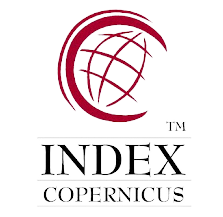About the Journal
Focus and Scope
The scope of articles for AML/CFT Journal shall focus on Anti-Money Laundering and Prevention of the Financing of Terrorism in which coverage includes but is not restricted to:
1. Money Laundering from Predicate Crimes;
2. Green financial crime;
3. Organized crime and Financing of Terrorism;
4. Money laundering using financial technology;
5. Development in financial crime investigations;
6. Trends in mode and typology of financial crimes;
7. Tracing and recovering assets;
8. Supervision of compliance with anti-money laundering and countering the financing terrorism programs;
9. Proliferation of weapons of mass destruction (WMD);
10. Crimes in Banking system.
Publication Frequency
The Journal of Anti Money Laundering and Countering the Financing of Terrorism (AML CFT Journal) is published twice a year.
- December
- June
Open Access Policy
This journal published with fully open access journal, which means that all articles available on the internet can be accessed by all users after being published. Non-commercial use and distribution in any media is permitted, provided credit / statements of authors and journals are listed wisely.
Its free availability on the public internet, permitting any users to read, download, copy, distribute, print, search, or link to the full texts of these articles. This is in accordance with Budapest Open Access Initiative.
Review Process
The journal applies a peer review policy as a means to ensure the quality of publication in the journal. The peer-review process consists of an initial review, blind review, and a decision by the editor.
Preliminary Review: Editors evaluate submitted manuscripts to determine whether content is appropriate for the journal. Manuscripts also undergo a similarity check procedure to identify indications of plagiarism. Manuscripts with content that is not suitable for the journal or with a high percentage of similarity will be immediately returned to the author.
Peer Review: Submitted manuscripts that have passed the initial review will go through a blind review process, in which the authors remain anonymous throughout the review process. A minimum of two review partners are assigned to evaluate and recommend a manuscript. In assigning review partners, the editor is responsible for avoiding conflicts of interest during the review process.
Decision:The editor makes the final decision on acceptance of the manuscript based on comments and recommendations from peer reviewers.
Archiving
This journal uses the LOCKSS and CLOCKSS systems to create a filing system with affiliated libraries and allows the affiliated libraries to create permanent archives of this journal for preservation and restoration purposes.
Plagiarism Policy
The maximum tolerance limit of similarity is 25%. Plagiarism screening will be conducted by Editorial Team using the Turnitin application.



















